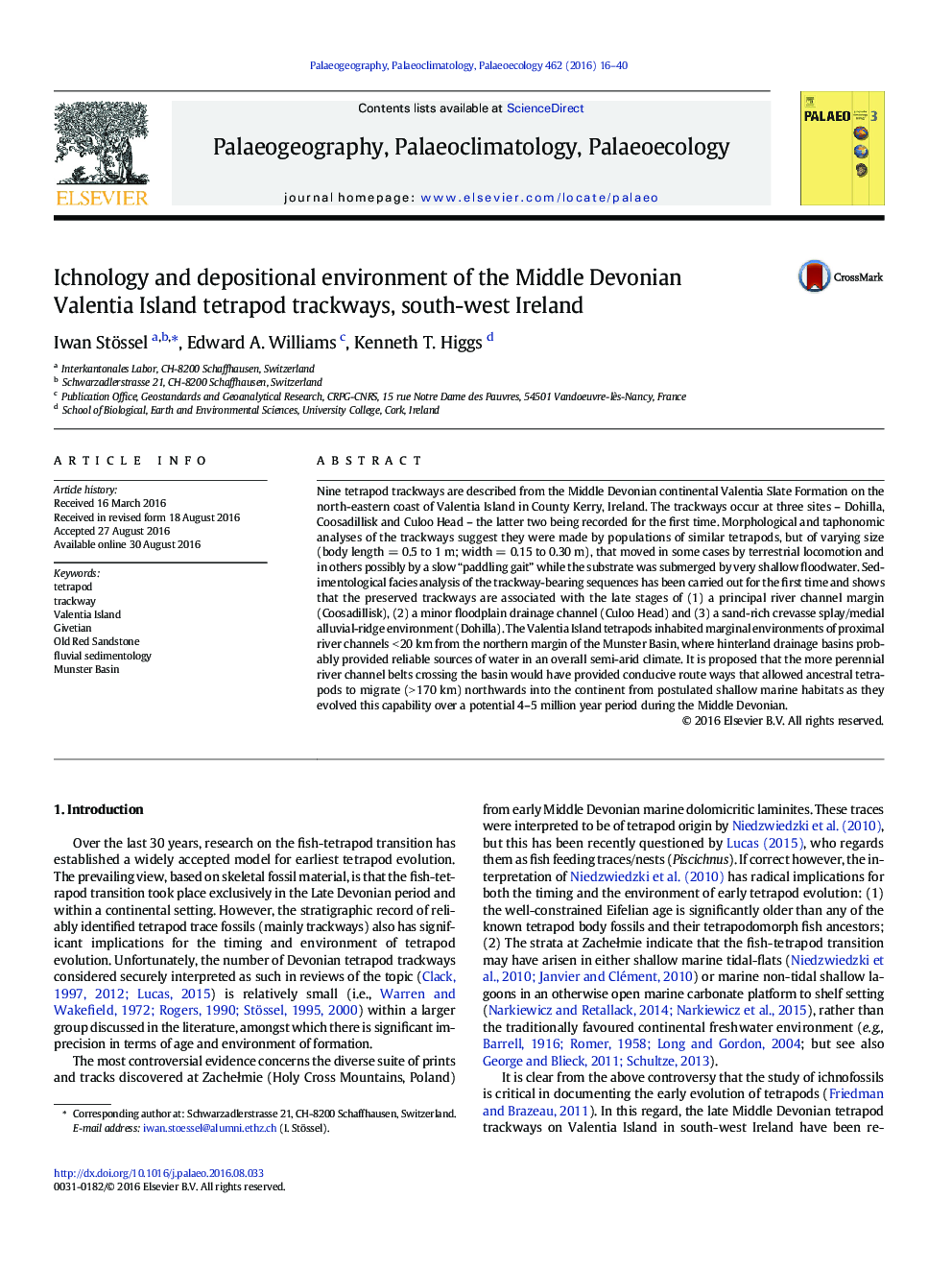| کد مقاله | کد نشریه | سال انتشار | مقاله انگلیسی | نسخه تمام متن |
|---|---|---|---|---|
| 4465507 | 1622129 | 2016 | 25 صفحه PDF | دانلود رایگان |
• Nine tetrapod trackways from the Middle Devonian continental Valentia Slate Formation, Valentia Island, Ireland are described.
• The trackways occur at three sites, two of which are described for the first time.
• Sedimentological facies analysis of the trackway bearing sequences has been carried out.
• The trackmaker inhabited marginal environments of proximal river channels.
Nine tetrapod trackways are described from the Middle Devonian continental Valentia Slate Formation on the north-eastern coast of Valentia Island in County Kerry, Ireland. The trackways occur at three sites – Dohilla, Coosadillisk and Culoo Head – the latter two being recorded for the first time. Morphological and taphonomic analyses of the trackways suggest they were made by populations of similar tetrapods, but of varying size (body length = 0.5 to 1 m; width = 0.15 to 0.30 m), that moved in some cases by terrestrial locomotion and in others possibly by a slow “paddling gait” while the substrate was submerged by very shallow floodwater. Sedimentological facies analysis of the trackway-bearing sequences has been carried out for the first time and shows that the preserved trackways are associated with the late stages of (1) a principal river channel margin (Coosadillisk), (2) a minor floodplain drainage channel (Culoo Head) and (3) a sand-rich crevasse splay/medial alluvial-ridge environment (Dohilla). The Valentia Island tetrapods inhabited marginal environments of proximal river channels < 20 km from the northern margin of the Munster Basin, where hinterland drainage basins probably provided reliable sources of water in an overall semi-arid climate. It is proposed that the more perennial river channel belts crossing the basin would have provided conducive route ways that allowed ancestral tetrapods to migrate (> 170 km) northwards into the continent from postulated shallow marine habitats as they evolved this capability over a potential 4–5 million year period during the Middle Devonian.
Figure optionsDownload high-quality image (94 K)Download as PowerPoint slide
Journal: Palaeogeography, Palaeoclimatology, Palaeoecology - Volume 462, 15 November 2016, Pages 16–40
